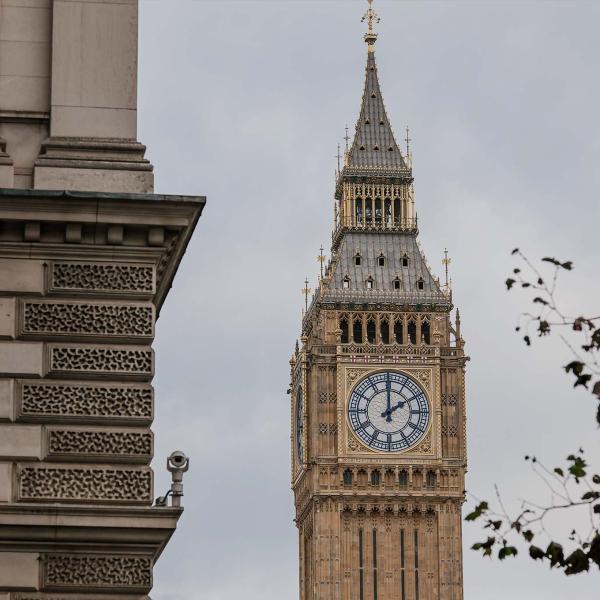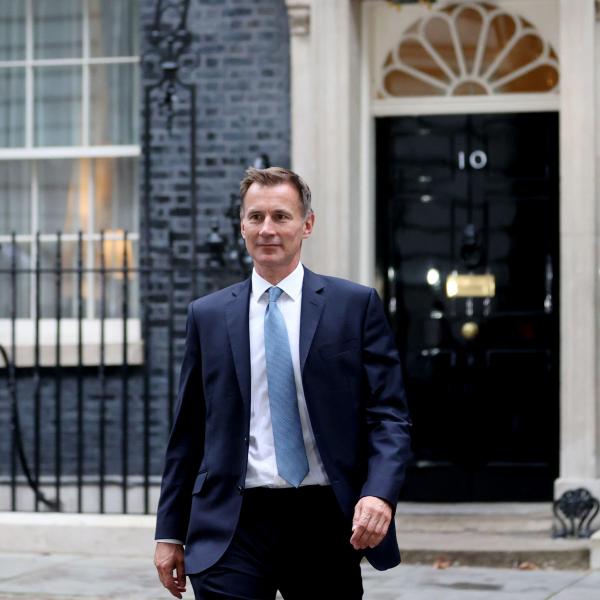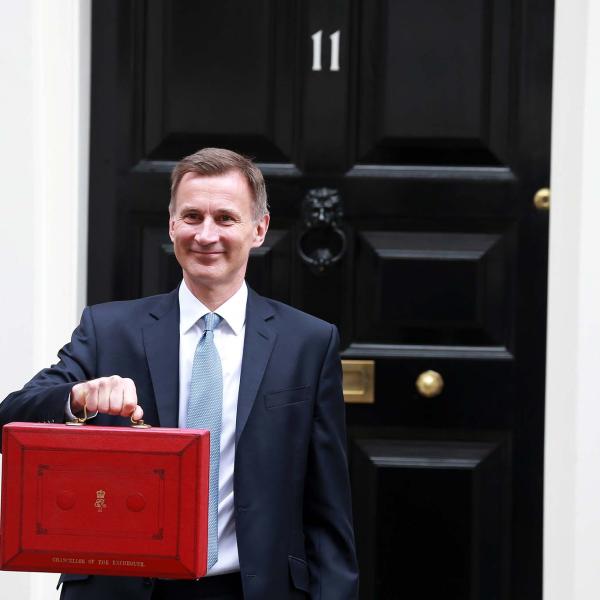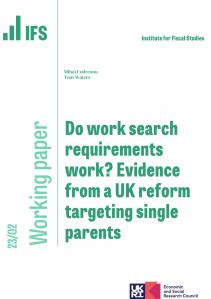IFS PRESS RELEASE
Neither Conservatives nor Labour are properly spelling out consequences of their policy proposals
The Conservatives have very few tax or spending commitments in their manifesto. Additional funding pledges for the NHS and schools are just confirming that spending would rise in a way broadly consistent with the March Budget. These plans imply at least another five years of austerity, with the continuation of planned welfare cuts and serious pressures on the public services including on the NHS. They could allow the deficit to shrink over time with no additional tax rises over the coming parliament. But getting to budget balance by the mid-2020s, their stated aim, would likely require more spending cuts or tax rises even beyond the end of the next parliament.
Labour by contrast is proposing very big increases in tax, a bigger increase in spending and, as a result, borrowing continuing around its current share of national income. They would increase spending to its highest sustained level in more than 30 years and taxes to their highest ever peacetime level. Even so the state under Labour would be no bigger than that in many advanced economies. However, their proposed plan for paying for this expansion in state activity would not work. They would not raise as much money as they claim even in the short run, let alone the long run. And there is no way that tens of billions of pounds of tax rises would affect only a small group at the very top as their rhetoric suggests. If they want the advantages of a bigger state they should be willing to candidly set out the consequences – higher taxation affecting broad segments of the population.
These are among the main conclusions of analysis by IFS researchers, funded by the Nuffield
Foundation and published today.
On tax:
- Labour have a set of policies intended to raise £49 billion per year from the “rich” and, overwhelmingly, from companies. The policies would indeed raise tax significantly. But the £49 billion calculation includes some factual mistakes with regard to part of their tax avoidance package, optimistic assumptions and unspecified tax increases. Their proposals could be expected to raise at most £40 billion in the short run, and less in the long run;
- The large majority of Labour’s tax rises come from the taxation of companies. These can raise significant sums and the headline rate under Labour would still be the lowest in the G7. But as ever there are real trade-offs. Like all taxes these would reduce the incomes of UK citizens – through lower wages, higher prices, or lower investment returns including those accrued within private pensions;
- The Conservatives have few tax proposals. Their promise to raise the income tax personal allowance to £12,500 would leave about 24 million basic rate payers £33 a year better off (in today’s prices). Factoring in the increase in the higher rate threshold too, around 4 million higher rate taxpayers would gain £208 per year in total. Approximately the highest-income ½ million individuals – who do not get a personal allowance – would gain £175 per year. The Conservatives have given themselves the freedom to raise rates of income tax and national insurance contributions, but have made no other commitments.
On welfare and pensions
- The Conservatives would go ahead with very big cuts to working age welfare benefits. These would save £11 billion a year in spending by 2021–22 and a little more in the long-run but would reduce the incomes of the lowest income working age households significantly – and by more than the cuts seen since 2010.
- Labour’s manifesto in fact commits it to cancelling only a small minority of these cuts to come, plus a number of much smaller giveaways including reversing some cuts already made. As a result, benefit measures to be implemented in the coming years would still be a significant takeaway from the poor, on average, under Labour. Changing this would require finding several billion pounds extra from somewhere.
- The Conservative commitments to replace the “triple lock” on the state pension with a “double lock” from April 2020 and, in some unspecified way, means-test winter fuel allowance payments represent a very modest change. Over the coming parliament the double lock would likely benefit pensioners as much as – and cost exactly the same as – the triple lock. In 50 years time we would expect the double lock to reduce spending by less than £5 billion relative to the triple lock, but still leave it costing almost £15 billion more than increasing the state pension in line with earnings. Meanwhile winter fuel payments represent just 2% of social security spending on pensioners.
- The Labour pledge not only to maintain the triple lock but also not to increase the state pension age beyond 66 would be immensely expensive in the long run – up to £50 billion a year in fifty years time relative to raising state pension age in line with longevity and increasing the pension in line with earnings.
On public service spending
- Conservative plans for NHS spending look very tight indeed and may well be undeliverable. A real increase of £8 billion over the next five years would extend what is easily the lowest period of spending increases in NHS history to 12 years (1.4% average annual growth between 2010–11 and 2022–23, with just 1.2% a year from 2016-17 onwards). Labour promise to spend more (2.0% growth per year), but even their plans look tight against historic norms (UK health spending grew by an average of 4.1% above inflation between 1955–56 and 2015–16)
- The original Conservative manifesto proposal on social care – with no cap on individual payments – made no attempt to deal with a fundamental challenge for social care policy, which is the lack of available insurance for uncapped care costs. It now looks like a cap on costs will be introduced. A Green Paper, followed by a consultation – as the Chancellor announced in March – would be a better way to make policy then Monday’s U-turn on the proposed change in direction that was announced the previous Thursday.
- Labour’s biggest spending commitment is the abolition of student loans. This would cost well over £9 billion a year in the longer term and would benefit high earning graduates the most. Labour would increase spending on schools and, in particular, childcare. The latter would be aimed at boosting both the quantity and quality of provision for the under fives. By contrast they say little about reversing cuts in spending in many other areas.
- Labour plans would likely increase the public pay bill by over £9 billion a year. Conservative plans for a continued cap on public sector pay would be hard to deliver. They would take pay in the public sector to easily its lowest level relative to private sector pay in recent decades, with likely impacts on recruitment, retention and motivation.
Wider economy
- Labour’s promised £250 billion of additional infrastructure spending over ten years would support the economy in the short term and, if well spent, the long term too, taking advantage of very low government borrowing costs. But alongside other commitments it would involve the national debt remaining close to current high levels.
- Both main parties plan to increase the minimum wage significantly. By 2020, Conservative plans would see 3 times as many people on the minimum wage as in 2015. Under Labour plans it would be more than 5 times, with more than a quarter of all private sector workers and 60% of those aged 18 to 24 having their wage set from Whitehall. There is a case for a higher minimum wage, but we simply do not know beyond what point further rises would start to impact employment significantly. This makes sudden large increases risky, especially for young people.
- Conservative plans on immigration would, if carried through, hit both the economy and the public finances. The OBR has already said that lower immigration as a result of the Brexit vote could reduce tax revenues by £6 billion a year in four years’ time. Getting net immigration down to the tens of thousands could hit revenues by a similar (and rising) sum again.
Paul Johnson, IFS director, said:
“In one sense the two main parties have rarely offered the British such a clear and substantial choice. One is promising relatively low levels of spending, tax and borrowing, while the other is promising a much bigger state. But neither is being really honest with the public. It is likely that the Conservatives would either have to resort to tax or borrowing increases to bail out public services under increasing pressure, or would risk presiding over a decline in the quality of some of those services, including the NHS.
Labour’s commitment to a much bigger public sector would require higher taxes that affect many of us. A bigger state than the one we have been used to is perfectly feasible as many countries have demonstrated, but Labour should not pretend that such a step-change could be funded entirely by a small minority at the very top. In particular the large increase in company taxation that they propose would undoubtedly affect a far broader group than that.”
Ends
1. For press enquiries, or to arrange an interview, please call 07730 667 013 or email @email or @email.
2. All of our analysis will be available on our dedicated election 2017 micro-site: https://election2017.ifs.org.uk/
IFS Election 2017 analysis is being produced with funding from the Nuffield Foundation as part of its work to ensure public debate in the run-up to the general election is informed by independent and rigorous evidence. For more information, go to http://www.nuffieldfoundation.org.











